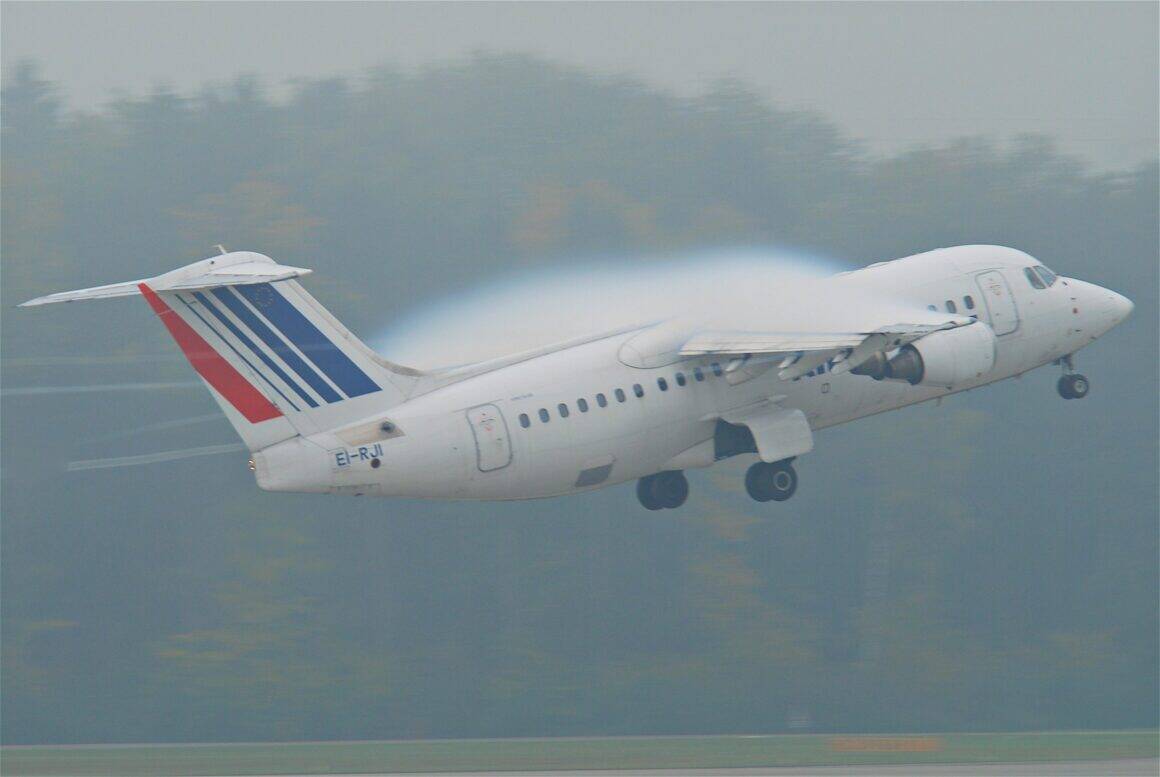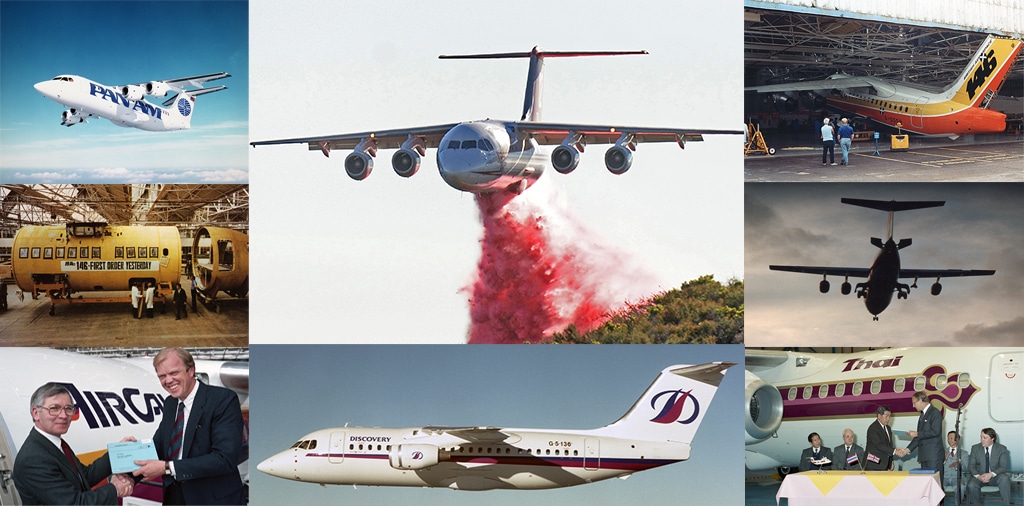BAe 146 Soldiers on Even With Poor Business Decisions

The 146 persevered, and even with the bad corporate decisions British Aerospace made along the way, the 146 kept selling, albeit slowly. BAe looked at more than one occasion to move to a two-engine aircraft, but development costs, not to mention it would contradict their “more from four” engine marketing taglines, pushed them to continue to modernize their current aircraft. 1990 was the pivotal year to make that transition, with BAe even talking to Tupolev about a joint venture, but the costs were just too much, and BAe was teetering on bankruptcy, instead moved forward with rebranding the aircraft as the Avro RJ with flight deck and engine improvements.
With a new sales force, engine reliability improvements, new branding that airlines accepted, and the sins of the past behind them, the team focused on dealing with triple-A carriers, concluding deals with Lufthansa, Northwest, Sabena, and more. This time, the airlines were doing very well with the 146 and continuing to open new markets like London City Airport, which, prior to the 146, was turboprop service only.

This continued with the last aircraft built in 2001, when 9/11 gave BAe the reason they had sought for nearly 15 years: to exit the aircraft business. Building and selling aircraft is difficult. Maintaining them and their flight operating certificate is another. BAe was in the midst of a new aircraft launch, the Avro RJX, which featured further enhancements and improvements but was still a four-engine aircraft.
Airlines were lukewarm at this point to a four-engine regional jet now that the market for regional jets was maturing. Instead of BAe being the only short-haul jet, aircraft from Bombardier and Embraer were now nipping at BAe’s heels. Ultimately, the lack of further innovation, especially moving to two engines, and increased competition sealed the aircraft’s fate. BAe got its wish to terminate the aircraft business, instead focusing on being an aircraft parts and components supplier, a partner with Airbus.
“Mission Success:” BAe Exits the Market

The 146 was a success, no matter how you look at it. It was Britain’s best-selling airliner, with 394 built and another 6 in various stages of construction before the program was terminated. Even more amazing was that of all the aircraft built, it had a stellar safety record, with no loss due to a defect in its design or other aircraft failure. Twenty years ago, aging aircraft would find their way into freighter conversions.
These days, aircraft are just retired and parted out. But the 146 continues on in a role it was never designed for but excels at: as a fire-bombing air tanker. Nearly two dozen aircraft have been converted and are based in North America to fight the more frequent and ranging fires. The aircraft’s ability to fly very slow and drop with pinpoint accuracy but still have the benefits of a jet (being able to deploy anywhere in North America within a few hours) makes it an ideal platform. There’s another aircraft used for atmospheric testing (FAAM) and a scheduled airline in Chile (DAP) that has charter flights to Antarctica using the 146.
New Book Tells The Story Behind The Original Regional Jet

There is so much about the aircraft and, more importantly, the people behind the aircraft itself. I wrote the book “Fighting to Be Heard” because I felt past attempts to tell the story of the aircraft and people had been lackluster. This isn’t your typical “dry history” where it’s aircraft details, fleet lists, who bought it, etc. This dives deep into the stories and covers areas that many other aviation books don’t go into, which I found personally fascinating.
This included everything from the sales process and sales stories to actual operator stories and fleet integration. I went so far as to submit an FOIA (Freedom of Information Act) request on PSA 1771 to obtain information never before seen or known of publicly. Fighting to Be Heard contains numerous never-before-published photographs, stories, and information that took 500 pages to tell the story, and that’s WITH editing! The book is a large coffee table-style book (12″ x 11″) weighing nearly 9 pounds.

The regular edition can be purchased from https://www.lajeteepress.com
The limited-edition G-LUXE edition can be purchased directly from the author’s website: https://avgeektv.com/fighting-to-be-heard/
If you’re based in Europe or the United Kingdom, the book can be purchased at https://theairlineboutique.co.uk
